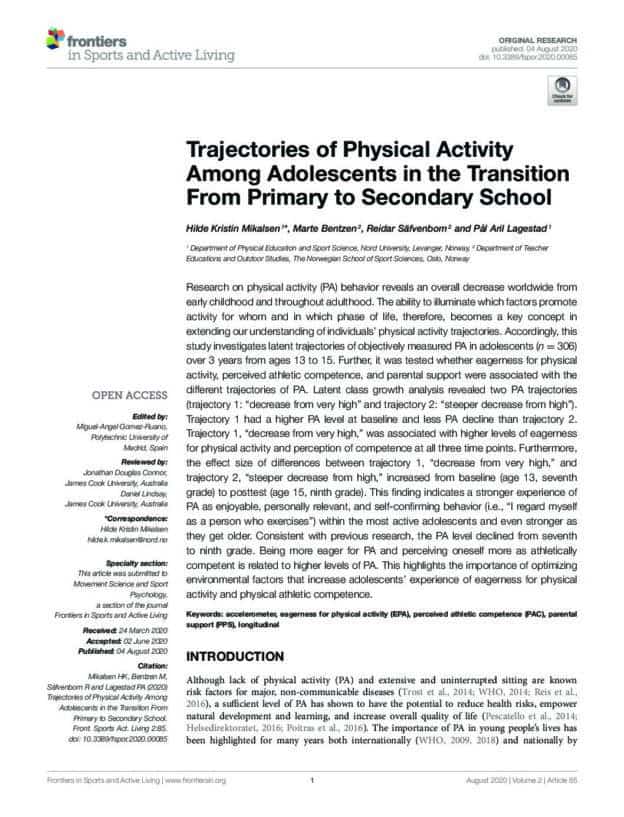Abstract
Research on physical activity (PA) behaviour reveals an overall decrease worldwide from early childhood and throughout adulthood. The ability to illuminate which factors promote activity for whom and in which phase of life, therefore, becomes a key concept in extending our understanding of individuals’ physical activity trajectories. Accordingly, this study investigates latent trajectories of objectively measured PA in adolescents (n = 306) over 3 years from ages 13 to 15.
Further, it was tested whether eagerness for physical activity, perceived athletic competence, and parental support were associated with the different trajectories of PA. Latent class growth analysis revealed two PA trajectories (trajectory 1: “decrease from very high” and trajectory 2: “steeper decrease from high”). Trajectory 1 had a higher PA level at baseline and less PA decline than trajectory 2. Trajectory 1, “decrease from very high,” was associated with higher levels of eagerness for physical activity and perception of competence at all three time points. Furthermore, the effect size of differences between trajectory 1, “decrease from very high,” and trajectory 2, “steeper decrease from high,” increased from baseline (age 13, seventh grade) to posttest (age 15, ninth grade).
This finding indicates a stronger experience of PA as enjoyable, personally relevant, and self-confirming behavior (i.e., “I regard myself as a person who exercises”) within the most active adolescents and even stronger as they get older. Consistent with previous research, the PA level declined from seventh to ninth grade. Being more eager for PA and perceiving oneself more as athletically competent is related to higher levels of PA. This highlights the importance of optimizing environmental factors that increase adolescents’ experience of eagerness for physical activity and physical athletic competence.



Responses